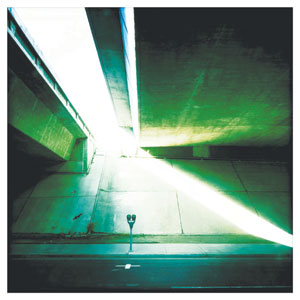

Fran Lebowitz once told the story of hotelier Steve Wynn, who purchased a $140 million dollar Picasso only to accidentally tear the painting once it arrived in his home.
The incident happened because said art collector was in fact blind. For Lebowitz, nothing exemplified the excess of the latter end of the 20th century quite like a blind art collector.
I write to tell you, dear readers, that, similarly, nothing exemplifies the meaning of the present quite like Instagram.
The sun-soaked drip of faux-analog is, without a doubt, the defining visual aesthetic of contemporary culture.
It is both a sign of the retrofitted and redundant; the (potentially nonexistent) difference between the past and the present-day. That sort of confusion is exactly what scholars and intellectuals (if, indeed, we ever see their like again) will find to be most fitting.
In case you’ve been living under a sepia-toned rock, Instagram became the subject of a $1 billion acquisition by Facebook this past Monday. The 16-month-old company has seen its user base rise above 30 million, with an additional 5 million having signed up in less than a week, once the company released its Android compatible app.
All it took for 12 people to turn a small Bay Area start-up into a billion-dollar industry in less than two years was to create something new that makes things look old, and wait for the new and the old to come running. We came, they saw, Zuckerberg conquered.
With iPhones and Instagram, the future of photography is quickly arriving. But for every surprising advocate (famed photographer Annie Leibovitz has come out in support of professional iPhone photos) there are notable detractors. Damon Winter, for instance, came under fire for war-zone photos taken on his iPhone Hipstamatic app (the pre-Instagram go-to for anyone looking for a faded film effect, and the company now most in need of being placed on suicide watch, unless Google or Microsoft want to outdo Facebook by acquiring it for $2 billion.)
Emotional Filters
The argument is really moot. The birth of social media has single-handedly killed the cultural elite, because in order to become the social standard, everyone need have access.
Consider the way the open forum of the Internet single-handedly killed professional criticism: If everyone has an opinion, an opinion becomes worthless.
The key difference between the photo presentation of a site like Facebook and Instagram is the agency of the actual photographer: you. Where Facebook is meant to highlight photos of you, Instagram is meant to focus more on photos by you. This is what made the product unique.
It aided us in perhaps our most unrealized advancement: that we can now, for perhaps the first time, leave behind a genuine, democratic, all-encompassing time capsule of present-day life.
Never before have we been able to capture the seemingly ephemeral moments of our most mundane activities, even though those activities have always been what define “life’ at its most basic level. And aiding in this widespread archive requires an actual engagement that had already become passe in the world of social media.
Which is surely why reactions to the Instagram/Facebook merger have been so brutal. The vitriol alone has been telling about the neurosis that surrounds vague definitions of “the cool.’
Facebook is the perennial threat that no one can quite explain or defeat. And an Instagram fanatic is the Harriet Tubman of social-media users, as both are equally obsessed with the underground.
The complex nature of photography has been dissected ad nauseam by everyone from Susan Sontag to Errol Morris: the photograph is a dangerous stand-in for reality and a flawed method of documentation.
But the intention of social media is secure: We are our own personal brand.
If Twitter birthed the need for all inner monologues to become externalized, Instagram offered a chance to share what one sees through an emotional filter—a way to present the world through the eyes of the user, and then enhance the visual by capturing the actual feeling of having witnessed it (which still doesn’t explain why the emotion most readily associated with drinking mimosas is apparently “melancholy’).
The end goal is simple: for everyone to feel noteworthy. It’s not a coincidence that sites or applications like this only really take off once celebrities are found to be using them. For them, it’s proof that they’re just like us. For us, it’s a way to be just like them.
There is much to be said about this generation’s rather troublesome obsession with fame, and fame’s constant blurring with “infamy’ until any distinction between the two has been almost entirely eradicated.
When we consider the way that social media seems to guarantee us a chance to be noticed in a population pool that saw an additional billionth birth just this past year, something like Instagram can seem systematically part of the problem, not the solution.
But life has become what we live online, and within that newly defined set of rules, any tool that seems to assist in taking notice and getting notice becomes a tool of almost embarrassing importance.
This is why Instagram is the product that defines our current moment in time most vividly. Because it combines our superficial obsession with nostalgia, aesthetics (even the asethetics of nostalgia), along with the reality that this is simply how things are now, and it’s best to embrace whatever helps make looking back on it prettier.


